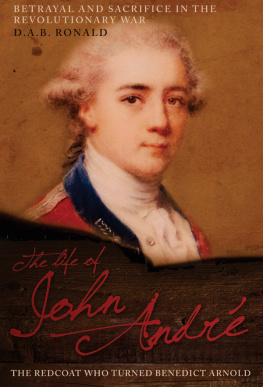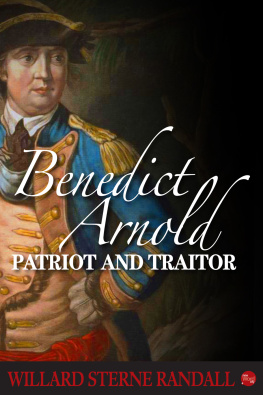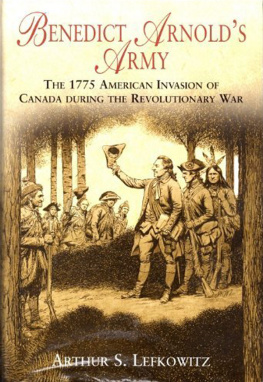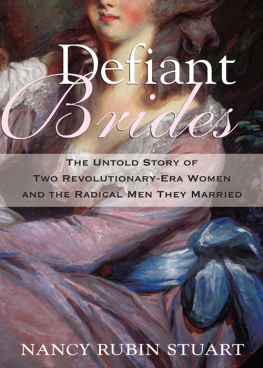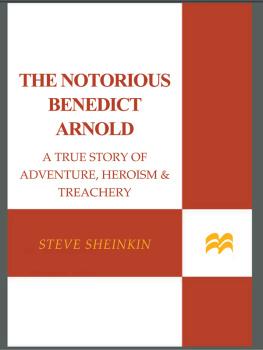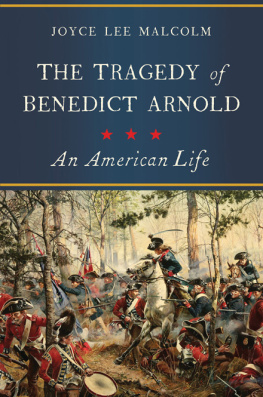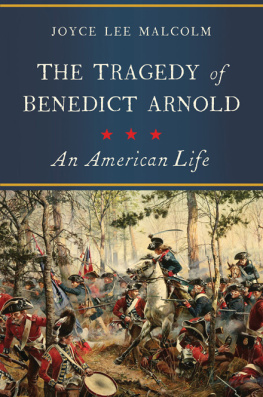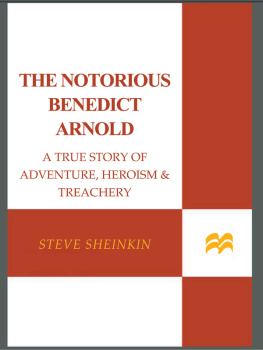Pagebreaks of the print version
THE LIFE OF JOHN ANDR
THE LIFE OF JOHN ANDR
The Redcoat Who Turned Benedict Arnold
D. A. B. RONALD
Published in the United States of America and Great Britain in 2019 by
CASEMATE PUBLISHERS
1950 Lawrence Road, Havertown, PA 19083, USA
and
The Old Music Hall, 106108 Cowley Road, Oxford OX4 1JE, UK
Copyright 2019 D. A. B. Ronald
Hardback Edition: ISBN 978-1-61200-521-8
Digital Edition: ISBN 978-1-61200-522-5 (ePub)
Kindle Edition: ISBN 978-1-61200-522-5 (Mobi)
A CIP record for this book is available from the British Library
All rights reserved. No part of this book may be reproduced or transmitted in any form or by any means, electronic or mechanical including photocopying, recording or by any information storage and retrieval system, without permission from the publisher in writing.
For a complete list of Casemate titles, please contact:
CASEMATE PUBLISHERS (US)
Telephone (610) 853-9131
Fax (610) 853-9146
Email:
www.casematepublishers.com
CASEMATE PUBLISHERS (UK)
Telephone (01865) 241249
Email:
www.casematepublishers.co.uk
Front cover: Major John Andre, posthumous portrait by John Smart. Signed JS 1781. Mounted on snuff box. (By kind permission of John and Roger Andre)
In Memory
of
Colonel David Bruce Ronald CBE
Notes on Dates, Spelling, Language and Names and Titles
Dates
Until the reform of the calendar in 1752, Britain conformed to the Julian Calendar (Old Style). Dates recorded in this calendar are referred to as old style and designated (os). All other dates are new style, the Gregorian Calendar which was eleven days ahead and used in most of the rest of Europe. The convention by which English New Year began on 25 March has been ignored, and it is given as starting on 1 January.
Spelling
Unless specified otherwise, all quotations retain their original spelling and punctuation. Italics, underlining and lower/upper casing are retained as found in the original texts, and vessel names, for instance, are only italicized if printed thus in quotations cited.
Language
Being that this work is a biography, it is important to understand how its main subject, John Andr, and, to a lesser extent, those around him reacted to the events they were part of. How these subjects expressed themselves is crucial to that objective. Hence, this work draws frequently on the language of the times. Moreover, original quotations are used copiously in this work, but are generally kept short in the interests of accessibility. Key words and phrases from these original texts are then repeated as navigation devices, their importance as biographical signposts highlighted by retaining their position in inverted commas even after they were first cited. The integration of these subjects language into the fabric of this work is intended as a pass-key facilitating entry into the life and times of these Britons and Americans witnessing one of the great events of modern history, the birth of a nation.
Names and Titles
The main subject, John Andr, takes his place informally in this work under his forename, John, except when being addressed otherwise by third parties. All other male subjects are addressed by their surnames. Female subjects are generally referred to by their forenames.
The length of military titles and of titles of office has dictated their shortening.
Preface
This book has as its background one of the most important periods in British and American history. It examines war, one of the most important events in human history. Nevertheless, it does so through the whole-life exploration of just one young man, John Andr, who was an officer in the British Army during the American Revolutionary War. Accordingly, this work is cast substantially as a biography. Events are seen primarily through this one young mans eyes, as his quest for honour dramatically unfolds into a story of heroic self-sacrifice.
To understand who John Andr was as a military officer, it is necessary to, first, probe how and why he became who he was. Essential to that is an investigation of his formative years, especially the influence of his family and what it meant to be a Huguenot refugee in Britain. His father, Anthony, cast a lifelong shadow over who John was obliged to become. His influence figures large in this work.
Once fully-formed, John Andr went to America at the age of twenty-four, ostensibly to help quell a riot which became a rebellion which became a revolution which became a war. This book follows Johns unique military career, as these successive events gathered pace and threatened to overwhelm all individual identity, but helped move him from the periphery to, fleetingly, the heart of history. There, John deservedly earned his right to be honoured by George III who commissioned a monument to his memory which has taken its permanent place in the nave of Westminster Abbey.
Reconstructing the full arc of Johns all-too-brief life has proved a challenge, long, tantalizing gaps when he disappeared from view alternating with short, sharp bursts of hustle and bustle during which his every thought and action became magnified. These extremes are mirrored in the intermittent nature of the writings by him which have survived, lengthy letters appearing suddenly to interrupt interminable periods of silence. Yet, by his own claim, he was an assiduous writerof letters, journals, newspaper articles and poemswhich suggests that many, certainly, of his private writings were destroyed. If so by whom, when and why? Negative spacethe perennial curse for historians and biographersoften tells its own story and, given the dramatic and controversial circumstances of Johns life and death, these silences invite, in his case, the notion that whoever came by his correspondencehis friends, his family, his enemiesdecided that Johns life and who he was as a person should only be partly known. That has been the position until now, space left precariously vacant for John to be portrayed by successive biographersall of them Americans seemingly interested in him only once he arrived in Americaas the quintessential caricature of the British redcoat officer and perfect counterpoint for the rebel heroes in Americas Continental Army.
However the attrition occurred to his personal records, the first of Johns private letters to survive intact are three written in quick succession during October and November 1769 when he was nineteen. The next to survive was from 1772, followed by approximately one a year thereafter until his death in 1780. Two important military journals written by him have also survived, one from 1775, another from 177778. These journals have become important official source documents for the history of the American Revolutionary War, one of the most written-about conflicts. Like John, many of those active in it were, evidently, conscious that they were living/ witnessing history in the making and were determined to keep their record of it.
There is also a small collection of Johns official correspondence dating from 1779 and 1780. The most important of these letters, including two sent to George Washington, have long been a matter of public record, written, as they were, in anticipation of his imminent death. Given the dramatic circumstances leading up to Johns premature death, previous biographers have been drawn magnetically to this period of his life, encouraged, in part, by the abundance of material from other sources close to John at what was such a turning-point moment not only in the story-arc of his short life but also in the war itself. In the process, however, Johns earlier letters have largely been ignored by previous biographers.

